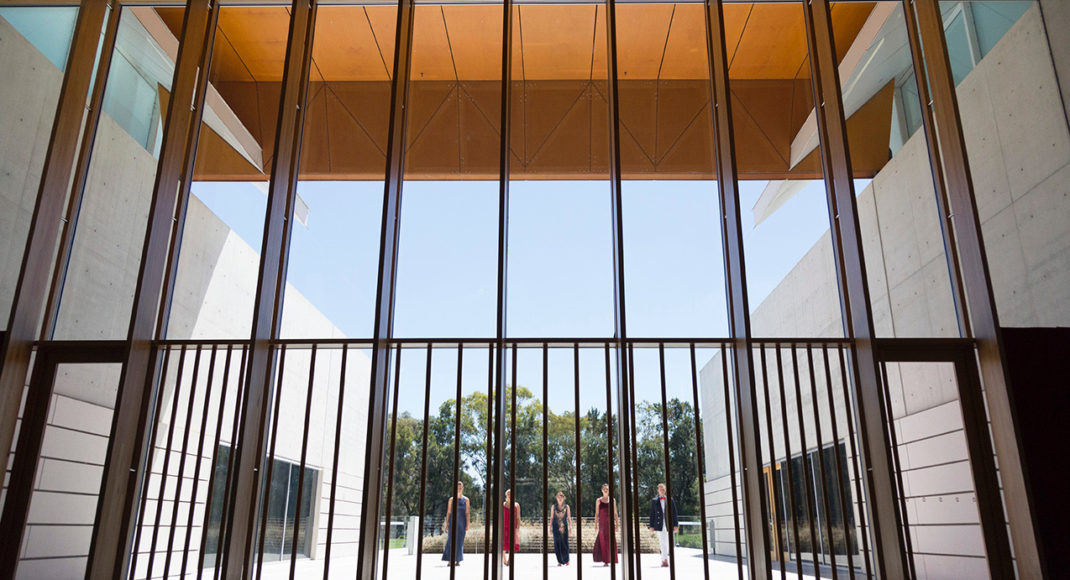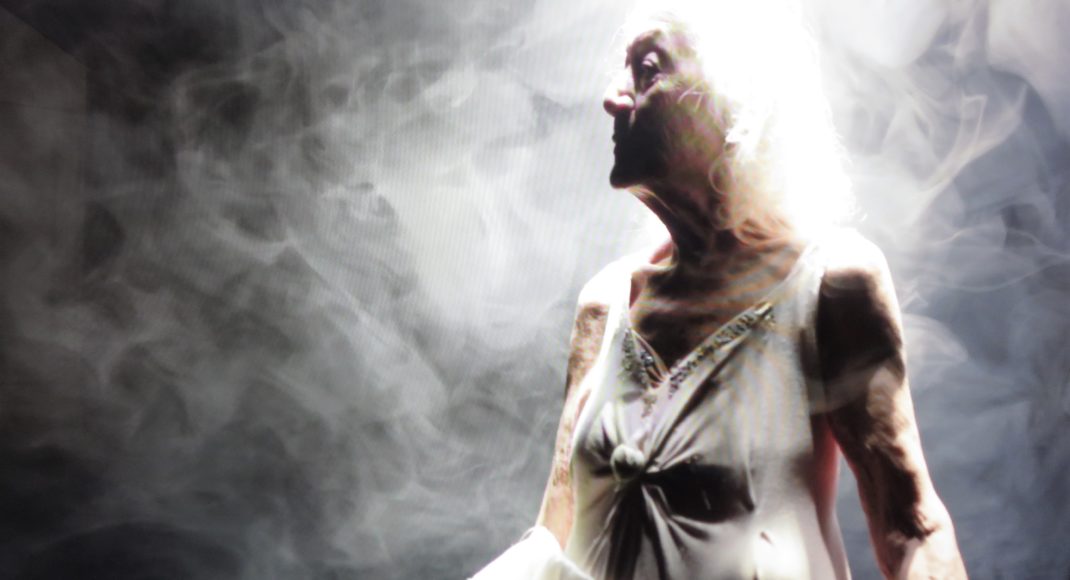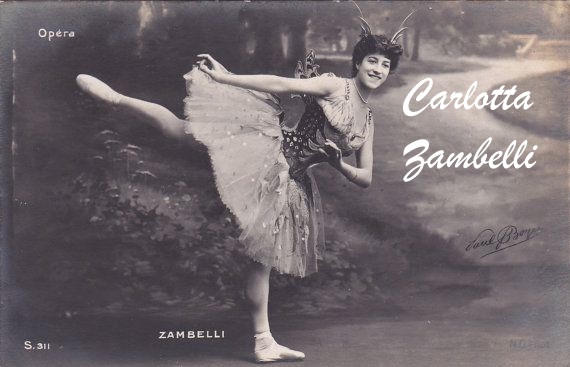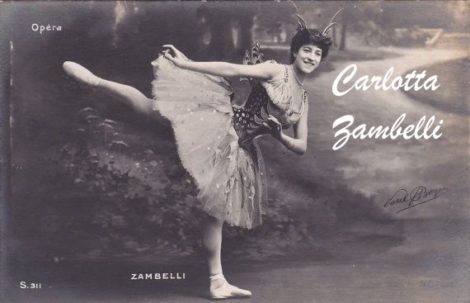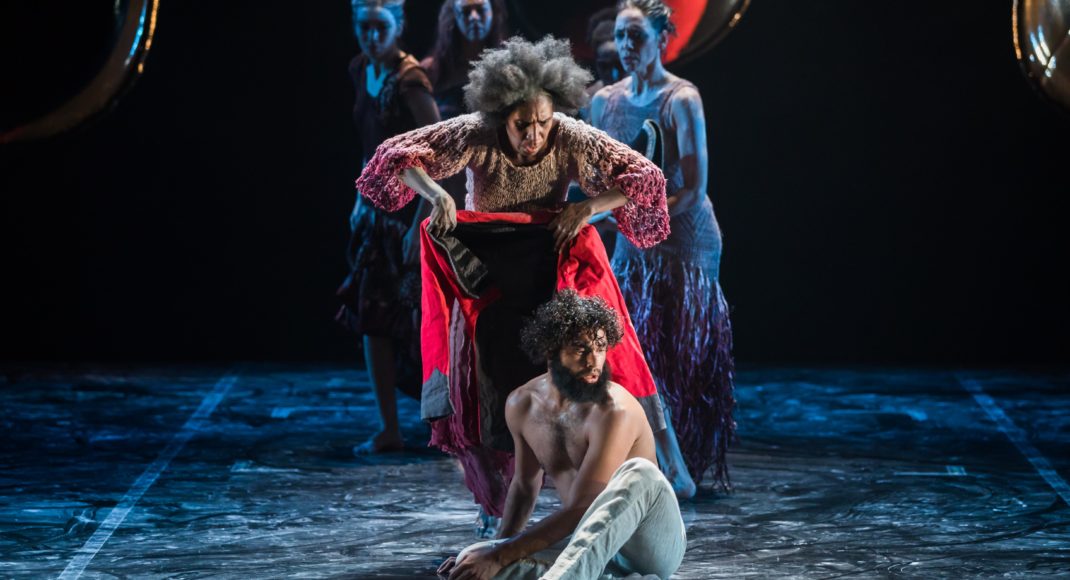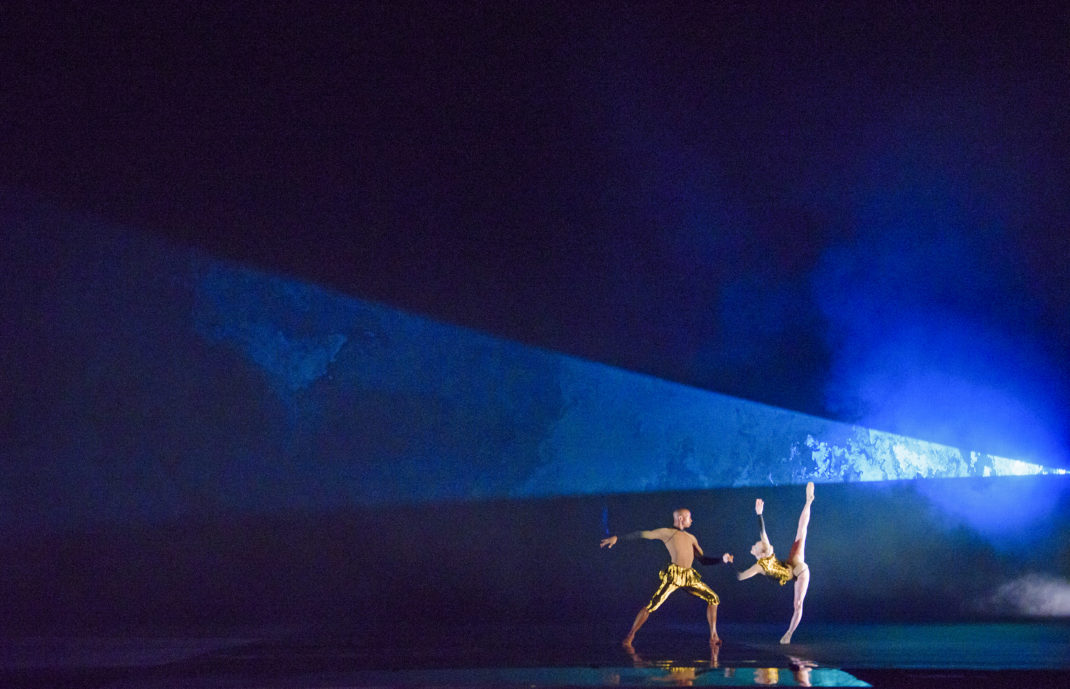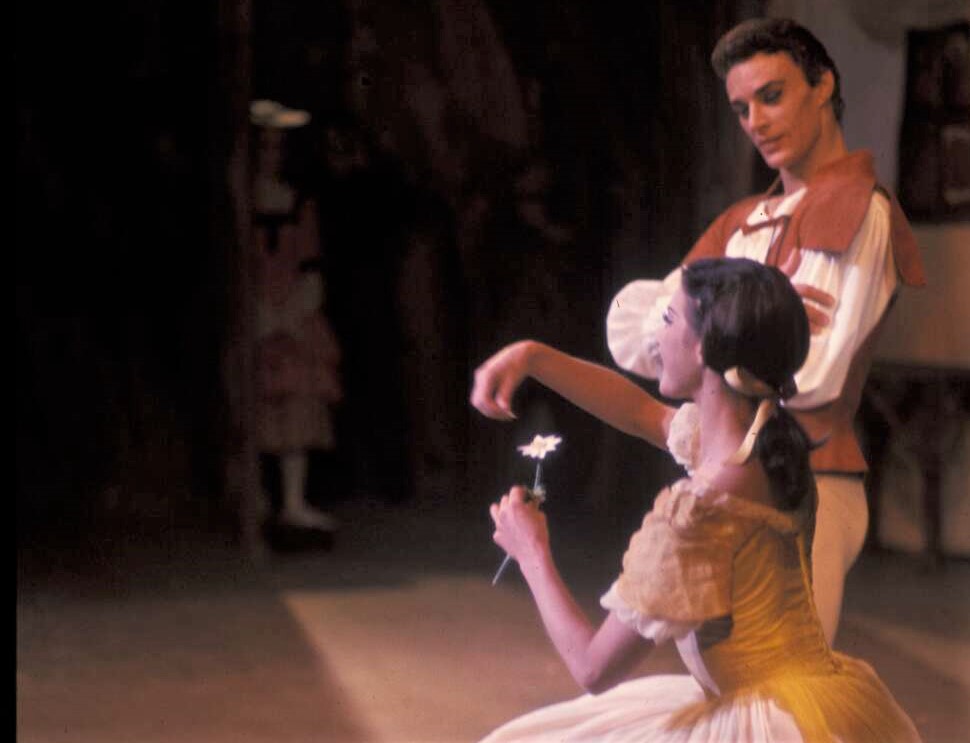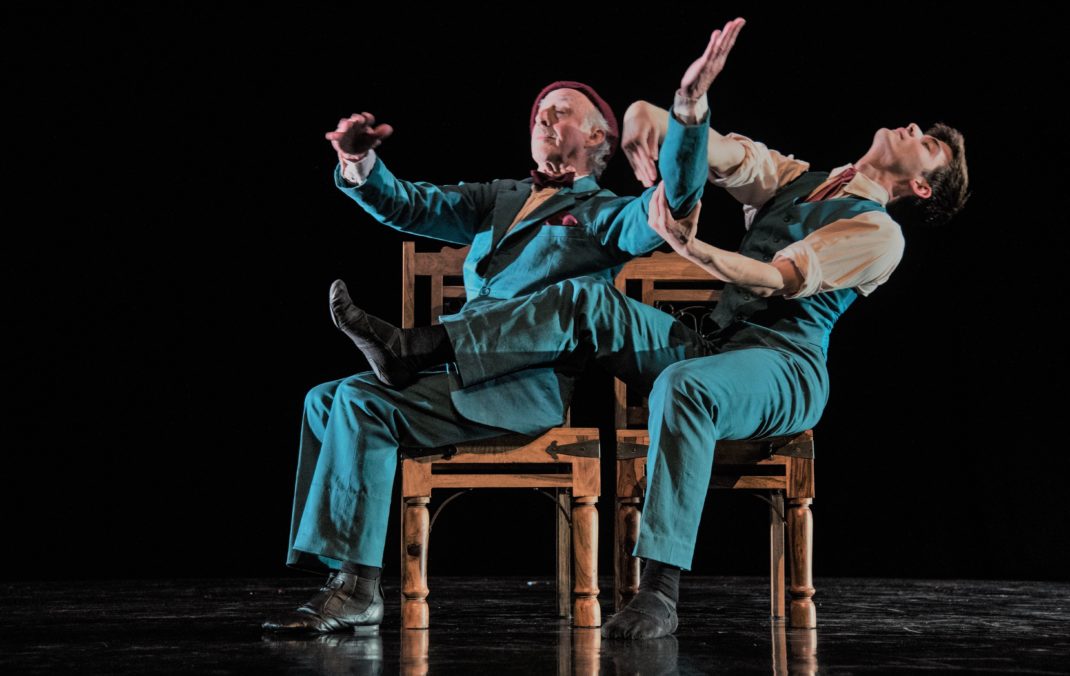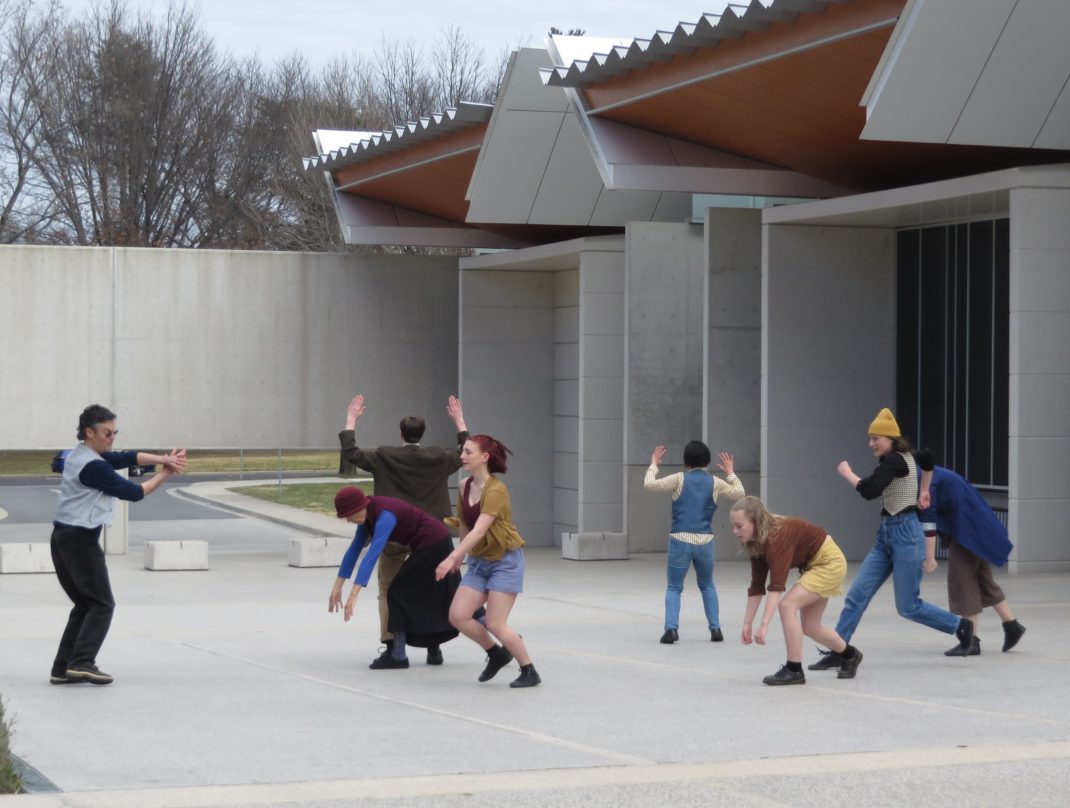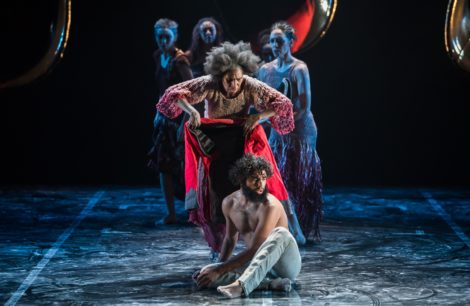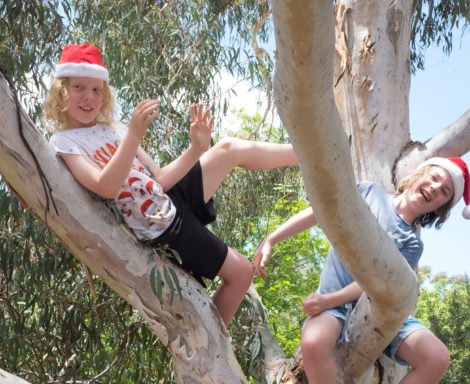18 February 2018. National Portrait Gallery, Canberra
Have you ever wondered what happens inside (and outside) a film studio? Well Australian Dance Party’s latest show, In a flash, gives a clue. Commissioned by the National Portrait Gallery, In a flash was made in response to Starstruck, a Gallery exhibition of portraits of Australian film personalities.
Party Leader Alison Plevey assembled four dancers—Adam Deusien, Gabriela Green, Leeke Griffin and Alana Stenning—to join her for a 25 minute, fast-moving and cleverly thought through piece. The five dancers were joined by photographer Lorna Sim and graphic artist Anna Trundle who, between them, shot and edited live a series of photographs, which were displayed as they were edited on a screen in the performing space.
The piece began in glamorous style, more or less—thongs were the order of the day in the footwear area. The five dancers began outside Gordon Darling Hall and made their way, after peering through the glass panels, inside. Once inside, their dancing was slick and paid homage, music-wise at least, to Strictly Ballroom. Sometimes the early parts of the show had an air of being full-on, over the top Hollywood style. Lots of smiling, lots of make-up, lots of presenting oneself.

But the glamour quickly gave way to more down to earth matters—behind the scene processes such as preparatory work, working up a curriculum vitae and the like. And costuming became more down to earth too when the glamorous outfits were discarded for rehearsal clothing or regular dance gear.
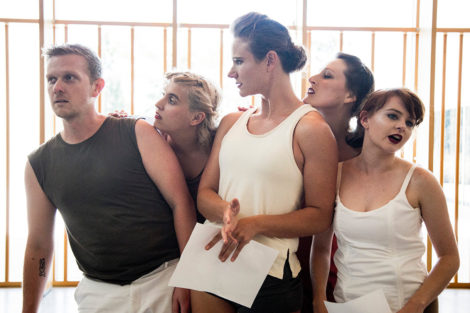
There was some strong dancing too in the form of solos, duets and company pieces. I especially enjoyed a sequence featuring the tall and statuesque Griffin, who danced with a white sheet of fabric (representing a towel?), tossing it, wrapping it around herself, and using it various other ways. Sometimes when she posed, legs together, body lifted tall and slightly arched back, head held high, she reminded me of swimmer and film star Esther Williams or, more appropriately in the circumstances, the Australian swimmer and also a star performer, Annette Kellerman.
As these performances (perhaps they should be called ‘takes’) were proceeding, Lorna Sim was taking photos, with her apparatus linked to a computer. Occasionally the shots from performance were beautifully edited into portrait-style images. Very appropriate given that we were in the National Portrait Gallery.
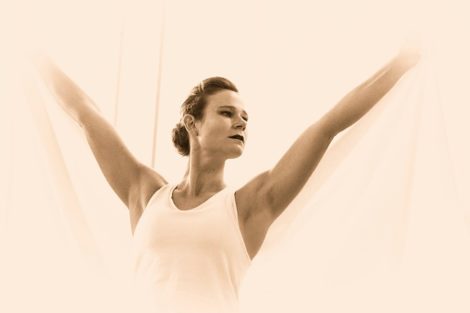
It was only at the end, however, when Sim faced us and said ‘thank you’ that I realised how cleverly put together In a flash had been. Alison Plevey thinks outside the box. She puts together shows that attract attention instantly, but in the end they go beyond that instant gratification. Demanding they are, but that’s what the best dance is like. I came away pondering about whether I was meant to be sitting in the Portrait Gallery, or in a film/television studio with Lorna Sim as the link with the audience.
Michelle Potter, 20 February 2018
Featured image: Opening scene, In a flash, Australian Dance Party, 2018. Photo: Lorna Sim, edited by Anna Trundle

Note: For various reasons, this is the first National Portrait Gallery dance commission that I have attended without seeing first the exhibition that was the inspiration for the show. This of course has it drawbacks. But by the same token, it means I came to the show without prejudices. Take it as it is written.
